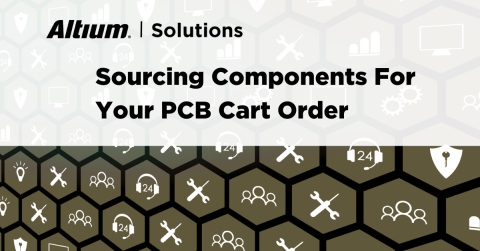Why We Really Need Inventory Management: Strategies and Tips

Why We (Really) Need Inventory Management
Inventory management is not a set of arcane and inconvenient rules but a way for companies to meet operational, financial, and customer service goals.
“Check Victor’s top desk drawer,” said the planner who was chasing a stock-out on the latest hot chip that was holding up an emergency customer order. “At some point we need to clean out his desk and put everything in stock”. But Victor would have none of it, nor would any of the engineers in his product development organization. Their own personal inventories of every component imaginable they needed for their projects were collected through prototype orders and samples by suppliers who wanted to get their products onto the project’s bills of material.
Inventory management is a crucial aspect of any business that deals with physical products such as manufacturers. This is especially true in the electronics industry, where the rapid pace of technological innovation and short product lifecycles can make inventory management particularly challenging. To be successful, electronics companies need to find a way to manage inventory levels and minimize stockouts while avoiding excess inventory.
Let’s Explore Some Inventory Management Strategies.
Analyze Demand Patterns. By using historical and forward-looking sales data, predictive analytics, and customer insights, companies can determine production schedules and make informed inventory decisions to support dependent and independent demand. Make sure the right quantities of the right materials are on hand when they are needed.
Set Reorder Points. Reorder points are predetermined inventory levels, typically for lower cost components, that trigger the ordering of replenishment stock. Set a reorder point at a level that allows for enough lead time to restock before the inventory runs out.
Utilize Just-In-Time Inventory Management. Just-in-time (JIT) inventory management is a strategy that involves ordering products only when they are needed, rather than maintaining a large inventory. This can help to minimize excess inventory and reduce carrying costs. JIT requires strong coordination between suppliers and customers, and it can be challenging to implement in industries with long lead times or unpredictable demand patterns.
Implement Automated Inventory Management. Automation can be a powerful tool for managing inventory levels and minimizing stockouts. By using software and sensors to track inventory levels in real-time, companies can quickly identify when inventory levels are running low and take action to restock.
Use Forecasting Models. Forecasting models can help companies predict demand for different products based on historical data and market trends. Companies can adjust inventory levels in anticipation of changes in demand, minimizing the risk of stockouts or excess inventory.
Establish Strong Relationships with Suppliers. Relationships with suppliers can be essential for effective inventory and supply chain management. By working closely with suppliers, companies can get early warning of potential supply chain disruptions, negotiate favorable ordering and payment terms, and ensure on time delivery. These relationships can also help to facilitate the implementation of a wide range inventory management strategies.
Manage Stockouts. Stockouts can also be costly, particularly for products with high demand or those critical to operations. Customers may turn to competitors if they are unable to find the products they need, resulting in lost sales. Stockouts can lead to increased expedited shipping costs which can add to the cost of carrying inventory and create disruptions in manufacturing schedules.
Address Excess and Obsolete Inventory. The cost of excess inventory can be significant. Products can become obsolete quickly eliminating their need. New products by suppliers are often introduced regularly, which can make it challenging to manage inventory levels effectively. Balance field support needs and end of life purchases when making inventory decisions. Pay attention to the date codes!
Monitor Inventory Levels and Turnover. Monitor inventory levels and turnover to ensure that inventory management strategies are working effectively. By analyzing inventory turnover ratios and identifying slow-moving items and repeated stockouts, companies can adjust inventory levels and ordering patterns.
Here are Four Things You Can Do to Help.
Create early warning bills of materials and engineering change notices. Understand the long-term ramifications of new designs and product changes you are working on. Establish part numbers for new components and create planning bills of material. Let others know about upcoming changes and potential component or manufacturing issues.
Identify long lead time and high-cost components. Keep track of critical components. Maintain a record of quotations and supplier communication, especially with new suppliers.
Communicate with procurement and planning. Loop procurement and planning into the design and pre-manufacturing phase of your project. Procurement can help to manage costs and initiate or smooth out supplier relationships. Planning can launch preliminary orders for long lead time components.
Empty your desk draws. Surrender your personal desk drawer stockroom into inventory so it can be accounted for and properly managed. Yes, even you Victor.










